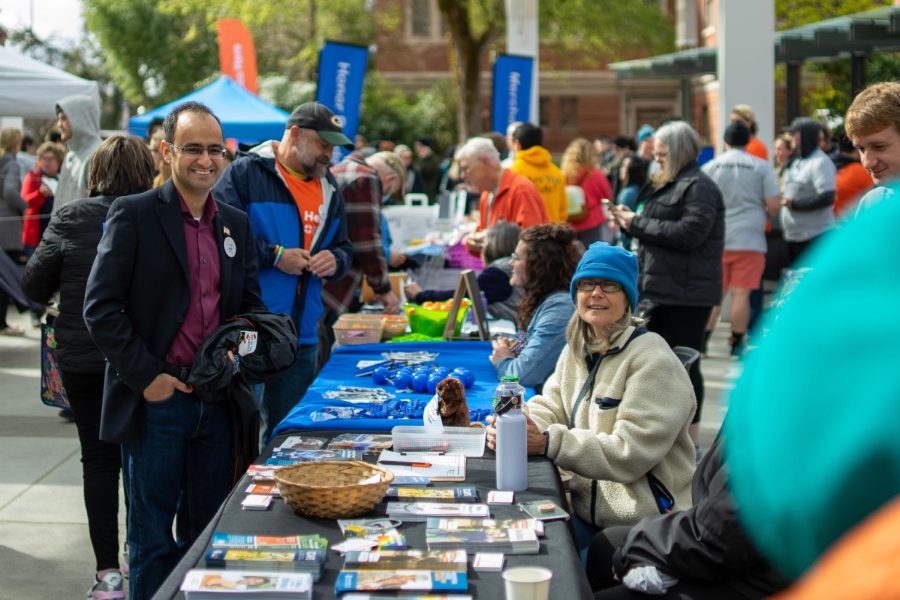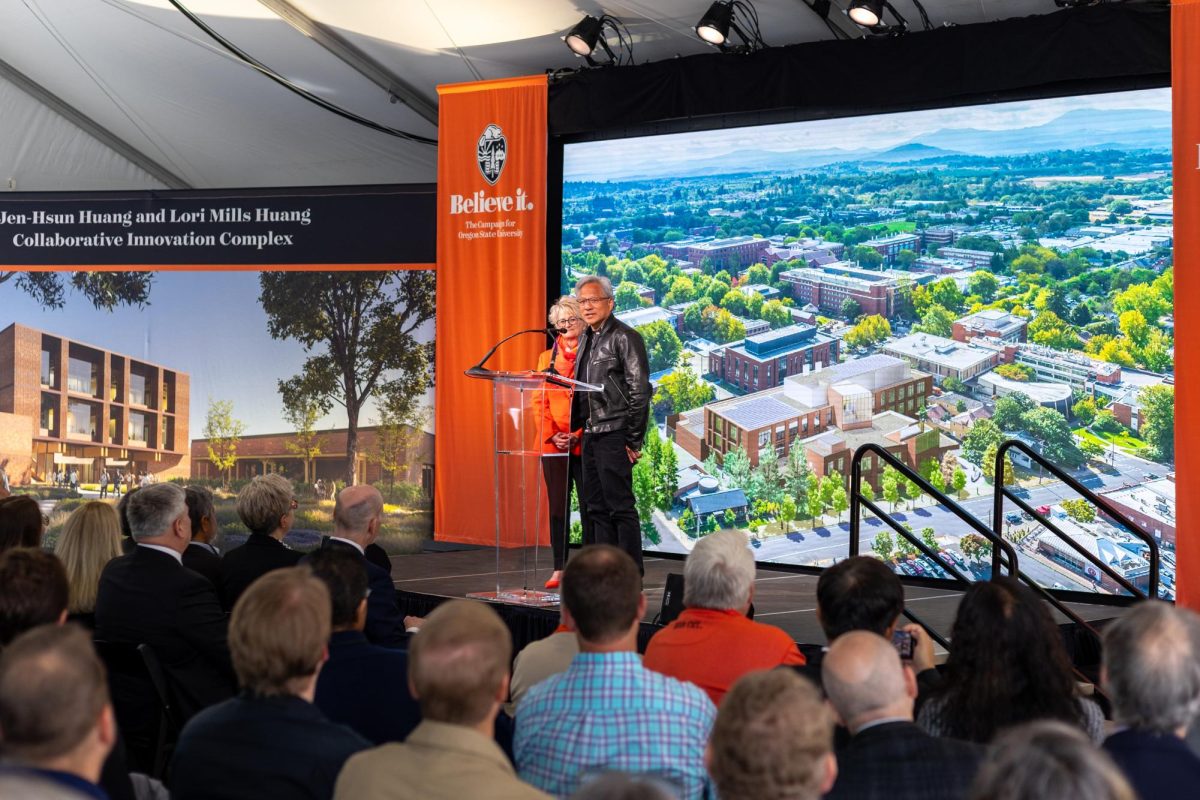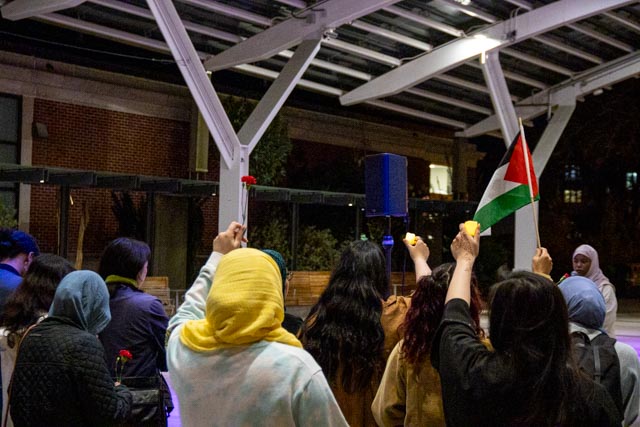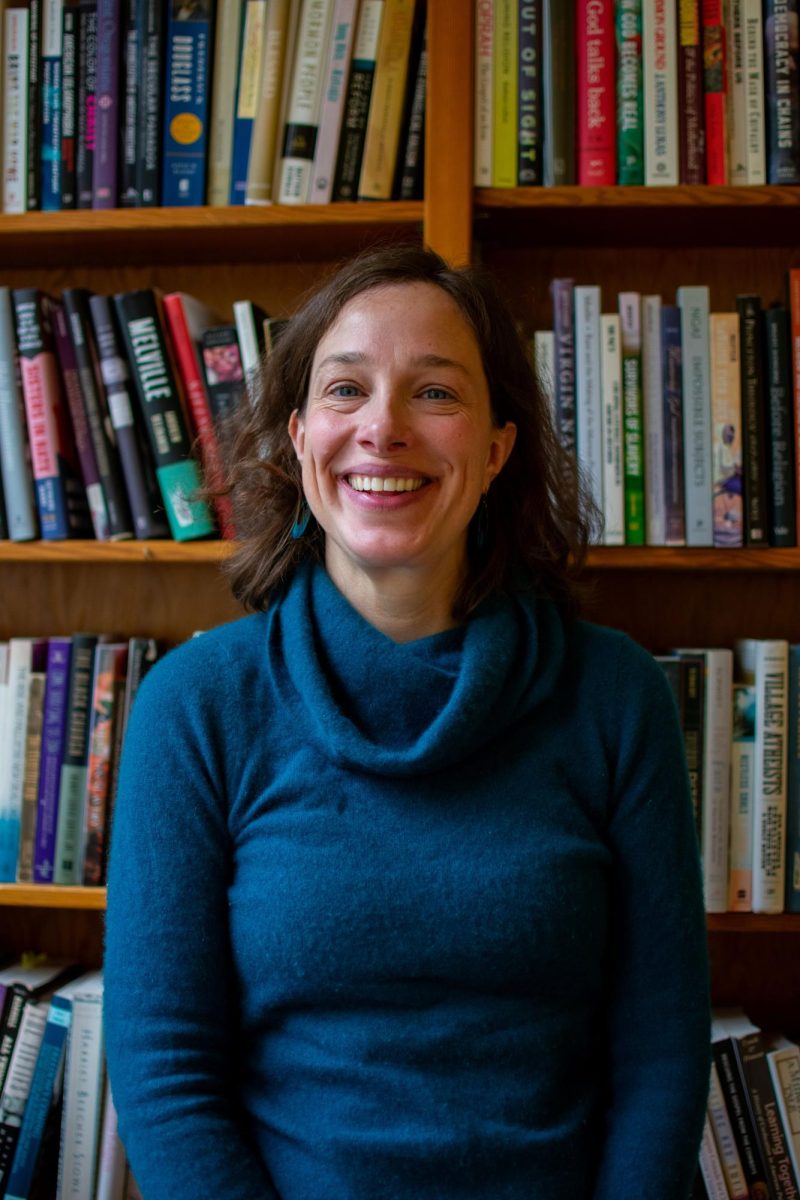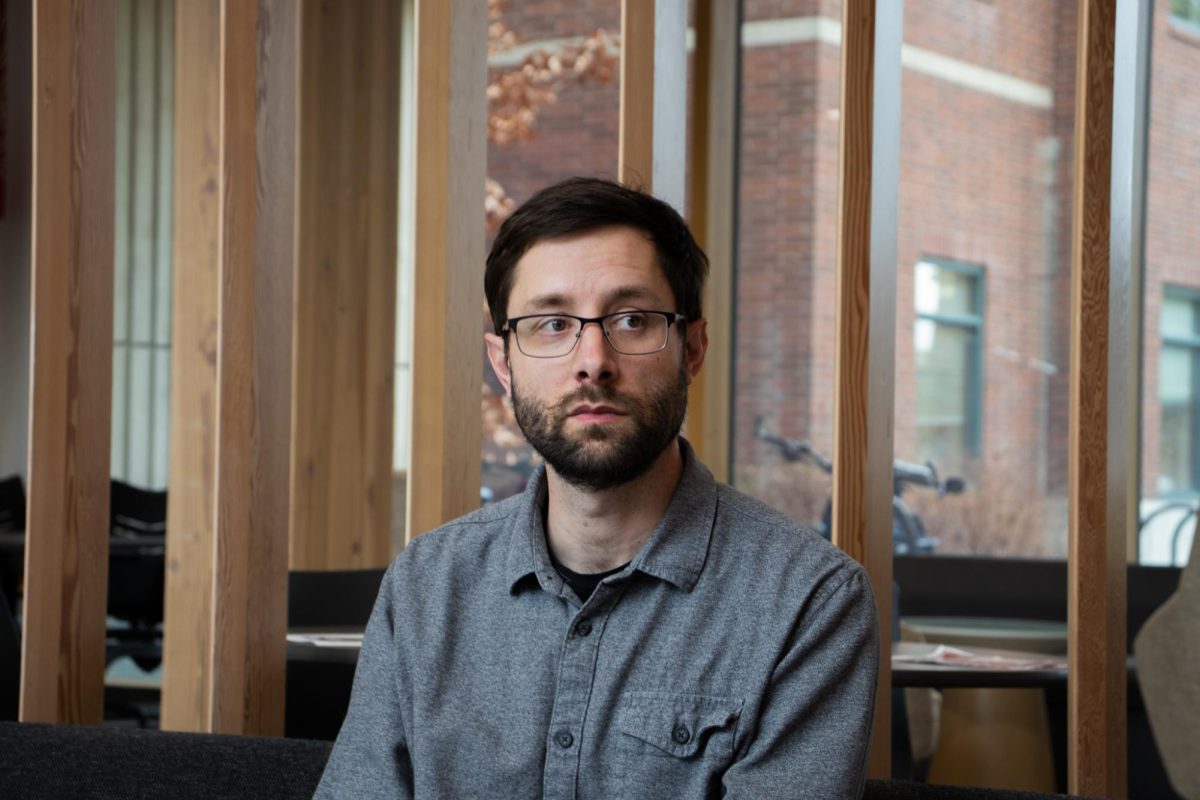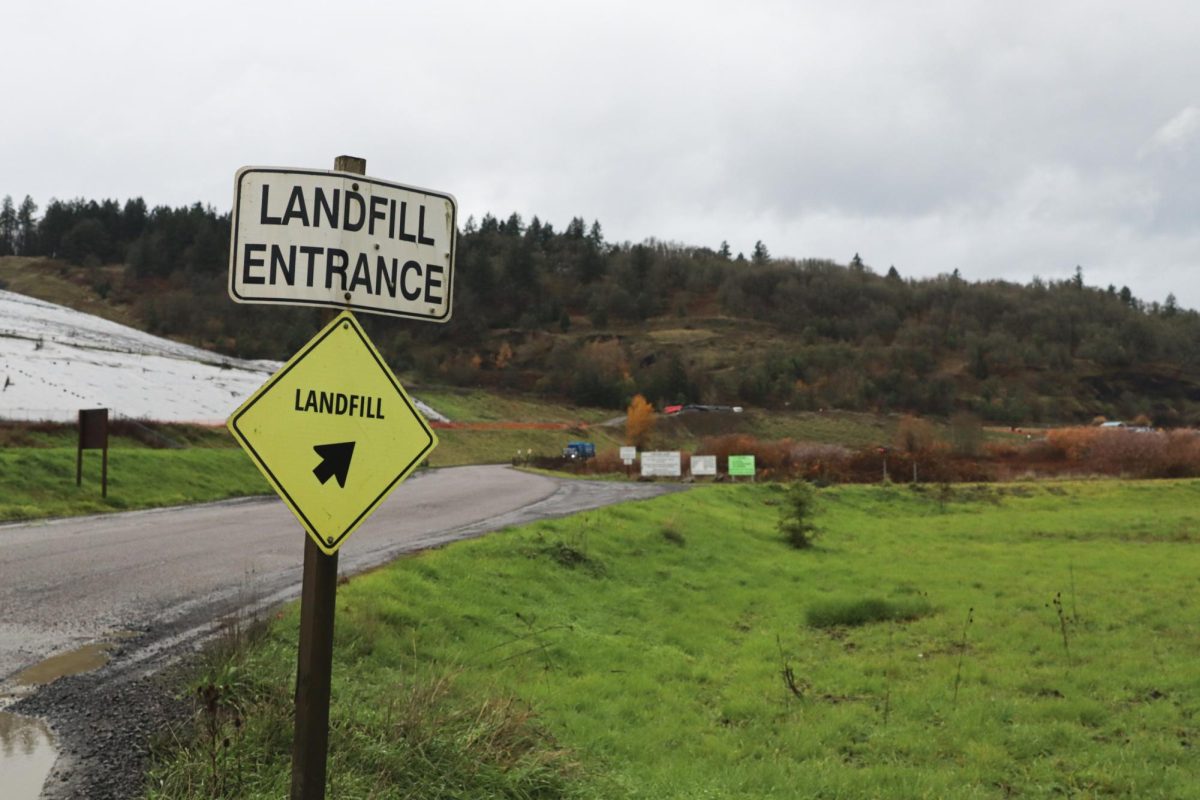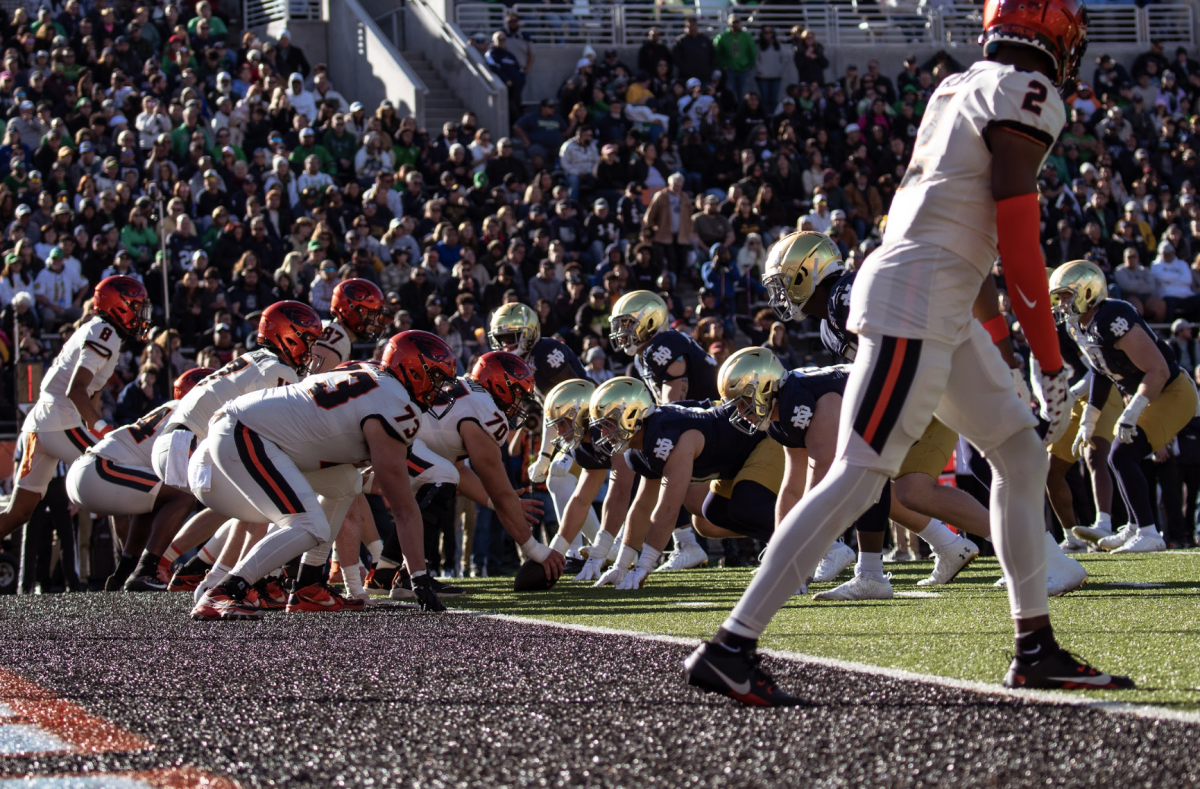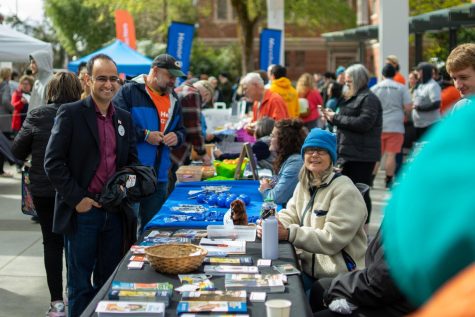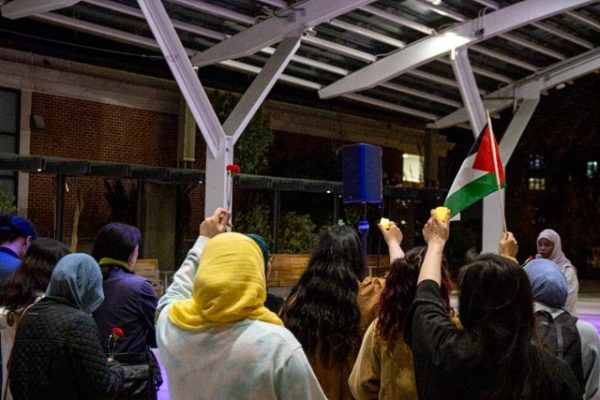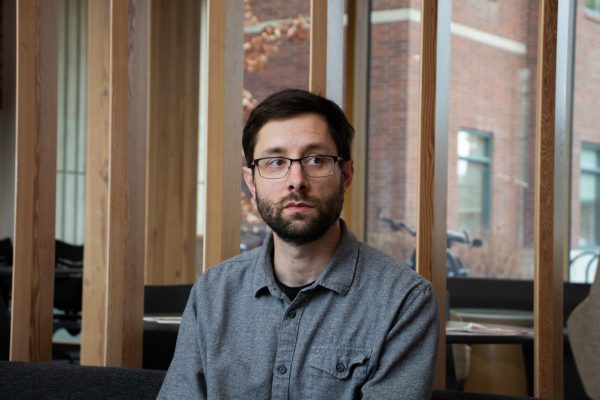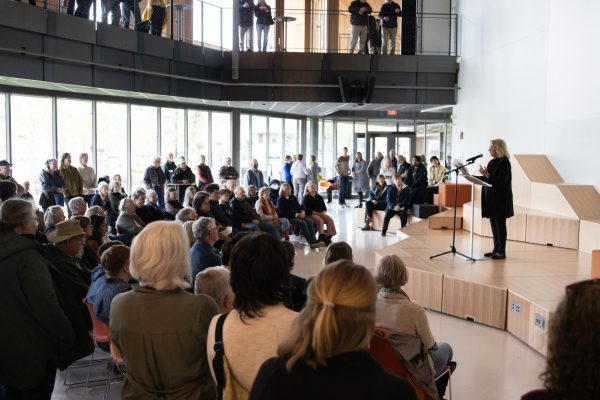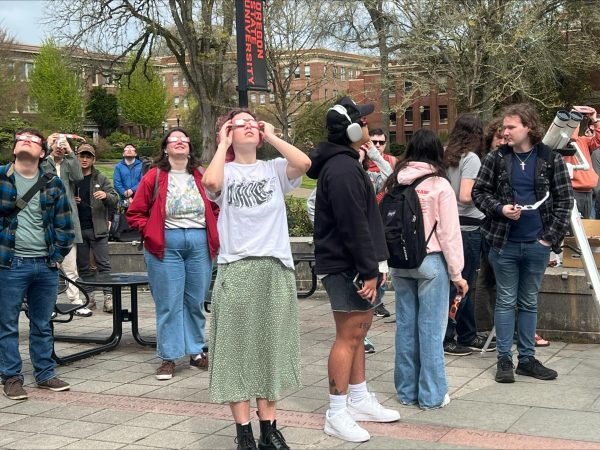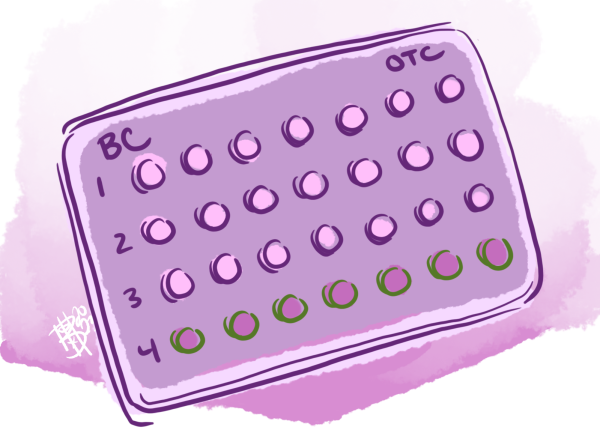Former U.S. Ambassador Calls for Nuclear Weapon-Free Zone
January 30, 2018
After over 30 years working as an ambassador advocating for nuclear non-proliferation, former ambassador Thomas Graham Jr, came to Oregon State University to discuss Nuclear Weapon-Free Zones. Graham began the lecture by telling stories of two times the world came extremely close to nuclear war when a plane was misidentified by Russian defenses, but Graham credits Soviet Colonel Stanislav Petrov’s restraint from using nuclear weapons.
“A brave man in the right place at the right time,” Graham said.
The second was when a scientific missile was misinterpreted by Russian computers as flying toward Moscow. This was the only time that the keys had been activated on a nuclear launch device, but the button was not pressed.
“In these crises there is always just a matter of a very few minutes,” Graham said. “If he hadn’t held back, I don’t know how much damage a nuclear preemptive strike would have done(…) but the majority of us probably wouldn’t be here.”
Graham has taught a course at OSU on nuclear arms control and non-proliferation for the past three years alongside David Bernell, Associate Professor of Political Science at Oregon State University. According to Bernell, some countries believe that nuclear weapons are more dangerous than they are helpful.
“[NWFZ] are areas established by treaty where a number of countries state they will not develop nuclear weapons. A lot of these countries believe they are more a liability than an asset,” Bernell said.
Graham then talked at length about the history of NFWZ and how all of Latin America became the first area legally banning nuclear weapons. In these areas, nuclear weapons cannot be developed, installed, or even transported under the Treaty of Tlatelolco.
The Pacific Islands and Australia followed suit and now 50 percent of the land territory of the world does not have nuclear weapons. He then discussed how we could gradually lower the worlds nuclear arsenal until it was almost gone.
“This treaty was motivated primarily by the French test program in the south pacific,” Graham said. “The French carried out something like 226 tests in the south pacific.(…) At one point the radiation level in Tahiti was 500 times the normal level.”
According to Associate Professor of History at OSU Christopher McKnight Nichols discussions on nuclear non-proliferation help highlight what needs to happen to create a nuclear weapons free world.
“Having these discussions helps illuminate how far we have come and how far we have to go. It helps find new ways to work out and resolve conflicts,” Nichols said.
After he was done with his talk, Graham opened up the floor for questions. A person in the front row asked about whether banning nuclear weapons would be a slippery slope for banning nuclear power. According to Graham, nuclear power is paramount to the survival of the human race.
“We can’t ban nuclear power,” Graham said. “We will not survive against climate change without nuclear power. It’s essential for the survival of humanity.”
Camille Palmer, Associate Professor of Nuclear Science and Engineering, says that these lectures are crucial to helping the peaceful development of nuclear power.
“I believe [these discussions are] important for every community to have a continuing perspective to a path forward,” Associate Professor of Nuclear Science Camille Palmer said. “It helps promote positive uses of nuclear technology.”
To get more information on Thomas Graham Jr’s idea for NWFZ look for his book published by OSU Press titled “The Alternate Route: Nuclear Weapon-Free Zones”.


